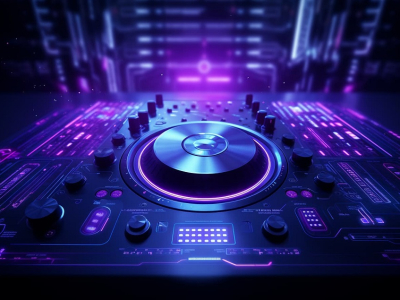Sample a bit of this. Sample a bit of that. It’s the taster’s choice. Whether you know it or not, sampling is everywhere in music.
Samples are small portions of recorded sound that are re-used in in new pieces of music. They’re easy to make and wickedly fun to use in your DAW.
Not sure how to sample? No worries, this step by step guide to creating the perfect sample will get you started on the wonderful path to sample paradise.
Finding audio to sample isn’t hard. Here’s the 5 best places to find free samples.
Finding audio to sample isn’t hard. Here’s the 5 best places to find free samples.
How to Find Sounds to Sample
- Use The Creative Commons – Creative Commons is a licensing organization that fosters the fair use of artistic work for other artists to use. Their search engine CCMixter is great for finding all types of sound that is legal to sample. Just type in what you’re looking for and browse the results.
- Search The Public Domain – When an artist creates something they keep certain ownership rights. But after a certain amount of time these rights expire and their works enter the public domain. That means they’re safe to sample. A great place to find public domain sounds is the music page on archive.org.
- Make The Sample Unrecognizable – Apply effects to your sample. Reverse it. Pitch it down. Layer it. Or bury it in the mix. This basically just means making your sample an entirely new thing. Sure, the original sound is in there somewhere. But you’ve made it your own and it’ll be hard to hear any trace of the original. Doing this can be a bit dicy. So make sure you really change it up.
- Use Sample Sites that Offer Royalty-Free Sample Packs – Sites like Kami RecordsSamples provide sample packs that are 100% royalty-free and legal to use in your own tracks. They’re the perfect resource for finding good free sounds to build a project around. They take the stress out of clearing samples.
- Clear Your Sample – If all else fails and you just have use that perfect copyrighted sound you can clear your sample with the owner. When someone writes a song the songwriter or publisher owns the rights. The same thing goes for recording a song. The recording is usually owned by the artist or their record label. To clear a sample you must get permission from both owners and enter into a sample agreement. Usually a very expensive endeavour. Your best bet is to stick to the royalty-free sample methods I mentioned above.
Smart sampling means doing the research. So dig long and hard and always make sure you know exactly who owns the rights to a work you’re sampling.
Knowledge is power.

Snatching the Needle from the Haystack
Now that you know where to find good sample material you have to start listening in a different way. Stop hearing the whole song and start focusing on the little bits.
Hear the song, but focus on the parts that it’s made of. If you’re looking for drums, hear the drum part. If you’re looking for strings, focus on the strings.
How to Use Samples
Let’s find a sample in a song and use it in a beat. There’s a million different ways to sample—loops, breaks, one-shots, vocals.
But for this example we’re going to take a small orchestral stab from the Dragnet theme song.
I found a sound that I like right around the 4 second mark. You can see it highlighted in the waveform below. I used Simpler in Ableton to isolate it.
Explore the options in your daw and try morphing, flipping, and effecting your sample. Most DAWs have an option to play your sample as a multi-octave voice.
It’s my favourite way to mess around with samples.
Here’s how I used my sample in a simple beat. I used the Dead Horse Beats sample pack for the drums. Listen close for the Dragnet sample.
What you do with your samples after you cut them out of the source material is the fun part. Experiment in every way that you can and add sampling to your production toolbox.





